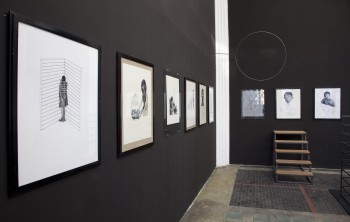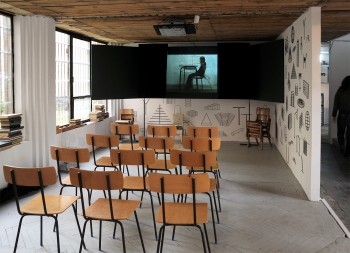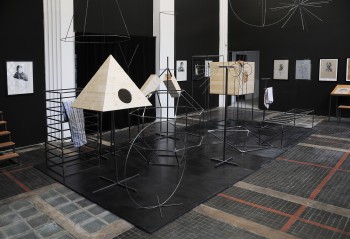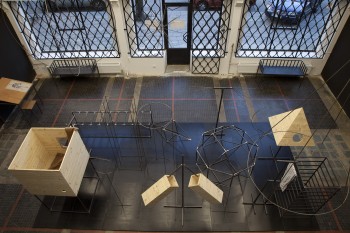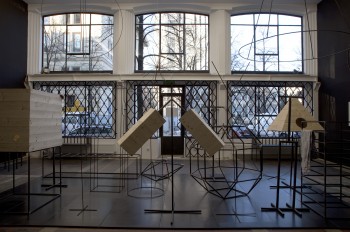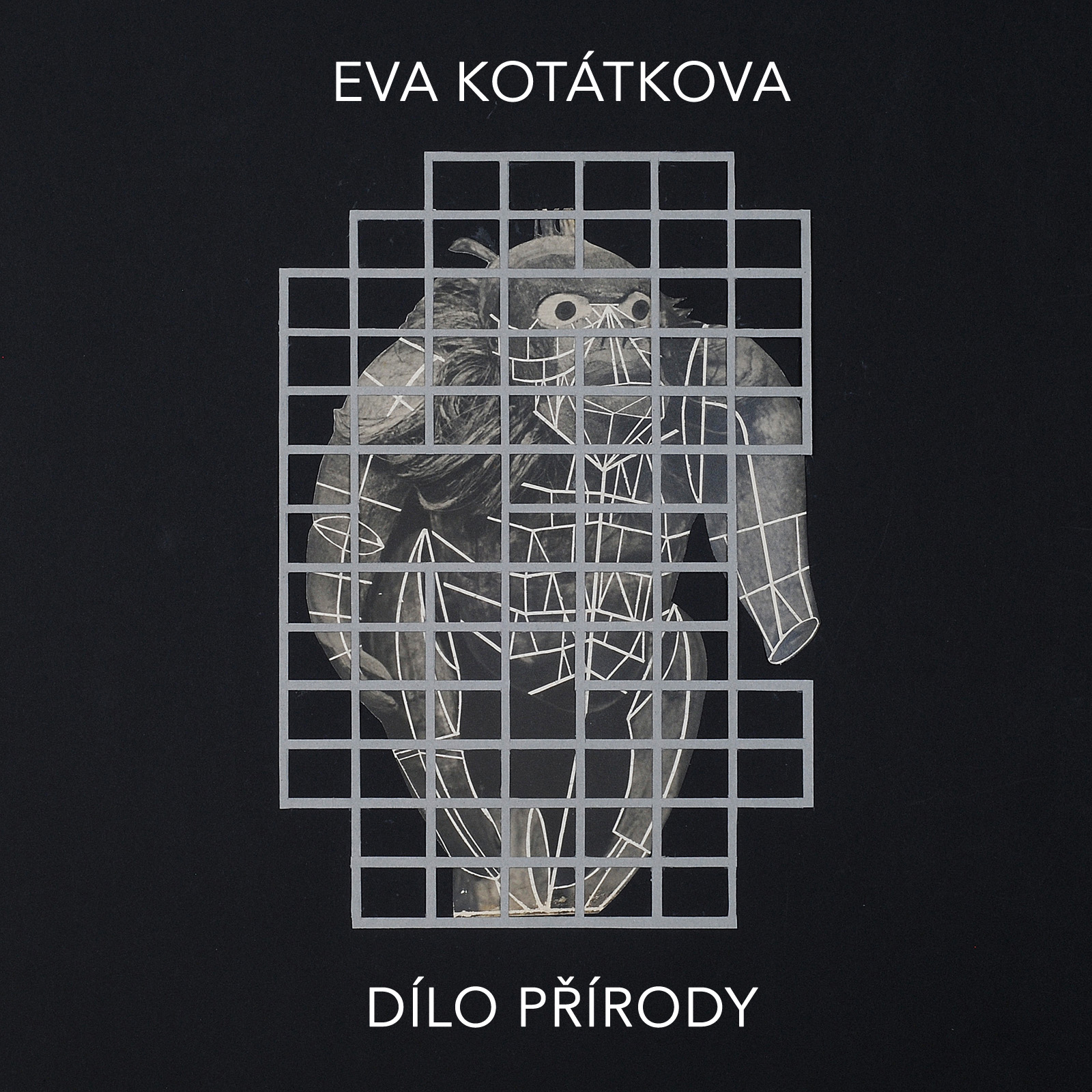
The premises at 63 Wspólna street, a contemporary art gallery (as decided by the local authorities of the Warsaw Śródmieście district), was turned by the Czech artist, Eva Kotátková, into a para-scientific laboratory institute specializing in studying the physical, vital and social functions of vertebrates. The institution, however, has been closed until further notice, as the UN International Council on Para-Scientific Activities deemed the research carried there, recently focusing on the ethically fascinating question of voluntary and forced imprisonment of animals and humans, dangerous to the existing social order. Kotátková has been analyzing such issues as the architectural structures organizing the work and behaviour of people in office and school circumstances, as well as the solutions applied in zoological gardens – paddocks, fences, cages, etc. – which provide absolute security to the animals living there, as well as to ergonomically divide the living space available to each of the species.
The particular inclination of the vertebrate to use different correction tools or constructions limiting the natural habitat has been the motif of a number of earlier works by the artist. In contrast to many other researchers, she sees this peculiar tendency as a pre-cultural gesture. Its origin lies in the corporal construction of the vertebrate, where the carrying element is the skeleton, sometimes very well developed (the skeleton of a mature person is made up of 206 bones). Many species, human beings especially, subconsciously strive to duplicate their own bone structure by creating an additional transparent external shell. Such desire can be the effect of social fears which determine defense, alienation and inbreed mechanisms – after all, how else to explain the different very strange ways a human behaves, voluntarily striving for self-limitation, mechanization of different activities and unification of the living space. The trend had its peak in the era of modernity in the 19th and 20th centuries of the current European calendar.
Kotátkova’s studies have further revealed that there are different forms of self-pressure depending on the phase of one’s life and development. When growing up, in the period of puberty, individuals are made to participate in special group physical exercises which teach them gregarious behavior and appropriate posture – the so called subservient stance (often termed as sitting-down).
The situation gets complicated once the individuals mature. It has been observed that the factor which impacts their mutual relations, corrective practices and inclination to enslavement was violence. The way violence manifests itself, in turn, is conditioned by the sexual drive. Looking at the different devices, such as seats on metal legs, bars or cages, it is difficult to immediately determine what is their proper function. It has been revealed, however, that people first test the oppressive looking structures (although we already know that their original formal inspiration comes from the natural skeleton of vertebrates) on animal species which are weaker. No doubt, they help manage and improve the social functions, determine roles within a community, visualize the division between those in command and those in subjugation. They can also be the product of the simple human intuition that a modern person, considering his/her cultural complexity, needs a better developed skeleton which could bear all the new duties and obligations. Most probably too, many of the objects created by humans do not have any definite functions but are simply the spontaneous expression of individual obsessions and phobias, the feelings of duty, safety, helplessness, subservience, curiosity, ecstasy, etc. After all, everything – the so called art included – is the work of nature.
Kotátkova’s institute, opened to visitors, shows the essence of the research process: from the initial and intuitive sketches illustrating the way the artist thinks, through the arranged interior which is to simulate the natural habitat of the live organisms which are subject to experiments (e.g. replicas of a classroom or a prison cell), to the fantastic objects and devices constructed as a result of the artist’s analysis of motor activity, imagination, natural drives and cultural inclinations of vertebrates. It contains a series of successful falsifications, such as recordings of a human voice copying the noises made by birds. There is also the artist’s model of an ideal zoo, which is a peculiar crowning of the years of studies so suddenly halted by the arbitrary decision of the UN commission.

